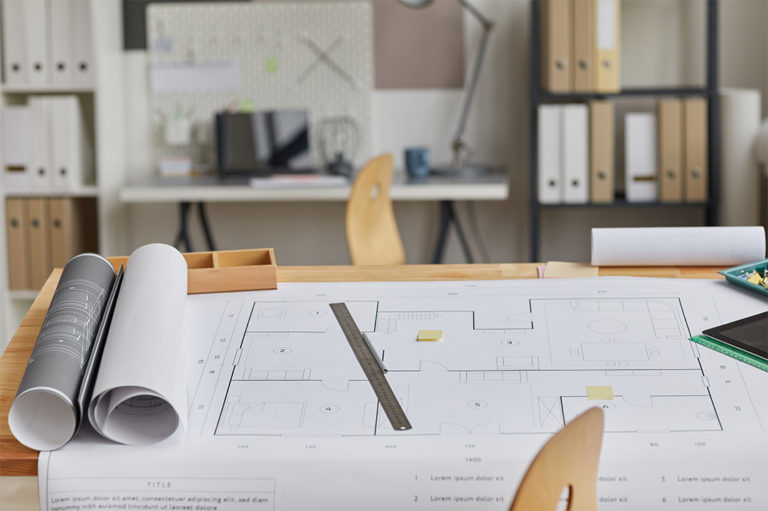What is "Interior Design Drafting"?
The role of drafter is crucial in the process of bringing an interior design project to life. Interior design drafting involves creating detailed technical drawings and plans that serve as a blueprint for the construction and implementation of the design. These drawings are essential for communication between clients, design teams, contractors, and other stakeholders involved in the project.

Here’s a more in-depth description of the interior design drafting role and their traits in general:
- Technical Drawings: Interior design drafters are responsible for producing accurate and precise technical drawings, which typically include floor plans, elevation views, section views, and 3D renderings. These drawings outline the layout of the space, the placement of furniture and fixtures, lighting details, and other design elements.
- Conversion of Concepts to Plans: Interior design drafters work closely with interior designers to translate their creative concepts and ideas into practical and feasible plans. They take the conceptual sketches and turn them into detailed drawings that can be used for construction and implementation.
- Measurement and Scale: Precise measurements and scale are critical in interior design drafting. Drafters ensure that all elements are proportionally represented and that the dimensions are accurate, allowing for a smooth construction process.
- Building Codes and Regulations: Interior design drafters need to be well aware in local building codes and regulations. They ensure that the design plans comply with these guidelines, making the project legally compliant and safe by engage and seek remedy from consultants, engineers and other various professional consultants.
- Collaboration: Interior design drafters collaborate with various professionals, such as architects, engineers, contractors, and suppliers. Effective communication and teamwork are essential to ensure that everyone involved in the project is on the same page.
- Software Proficiency: Drafters use specialised computer-aided design (CAD) software to create their drawings. Proficiency in CAD tools is a must for interior design drafters to efficiently and accurately produce the required technical plans.
- Material and Product Selection: Drafters may/could also be involved in assisting with material and product selection. They need to have a good understanding of different materials, finishes, and furnishings to integrate them into the design plans appropriately.
- Revisions and Updates: Throughout the design process, changes and revisions are common. Drafters must be flexible and able to update drawings accordingly, ensuring that all modifications are accurately documented.
- Attention to Detail: Interior design drafting requires a keen eye for detail. Small errors in measurements or placements can have significant consequences during construction, so being meticulous is crucial.
- Time Management: Meeting deadlines is essential in the design industry. Drafters must manage their time effectively to deliver drawings promptly and keep the project on track.
Overall, interior design drafters play a fundamental role in turning creative visions into tangible and functional spaces. Their technical expertise and attention to detail contribute to the successful realization of interior design projects.
Disclaimer: Please be advised that the descriptions provided above offer a general overview of potential responsibilities associated with an interior design draftsperson. However, it’s crucial to recognise that the interpretation and application of these roles and their duties can significantly be different based on individual practices. While we are committed to addressing your specific needs, certain aspects of these duties may remain beyond our assurance or capability due to inherent limitations in the role itself. For matters pertaining to compliance with the National Construction Code (NCC) and various Australian Standards, we strongly recommend engaging an independent consultant. It’s important to note that we do not possess the necessary licensing to provide consultancy services, and therefore, we absolve ourselves from any related responsibilities. Furthermore, any outcomes resulting from actions taken based on our general guidance should be understood as the outcome of your discretion, as we disclaim liability in such matters.